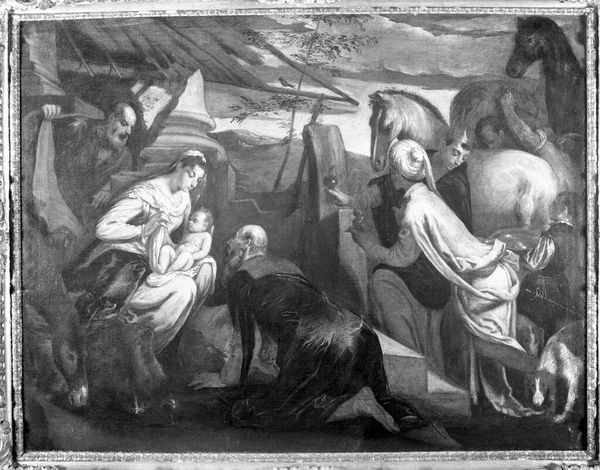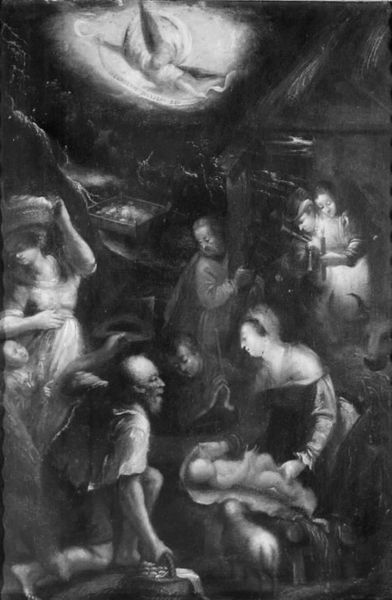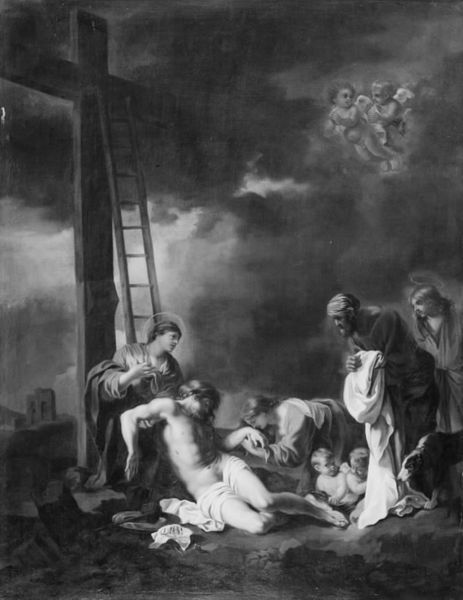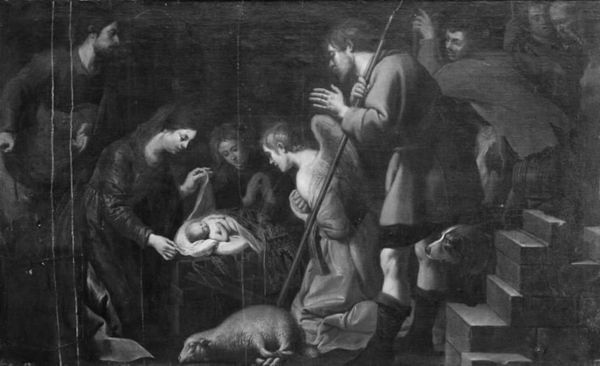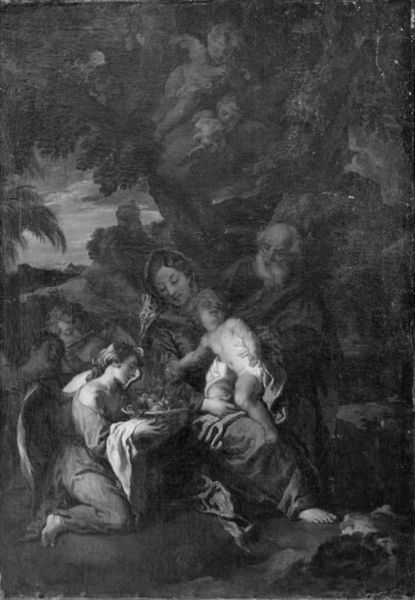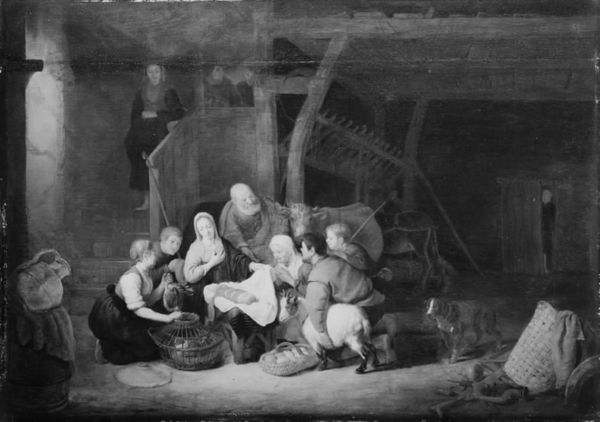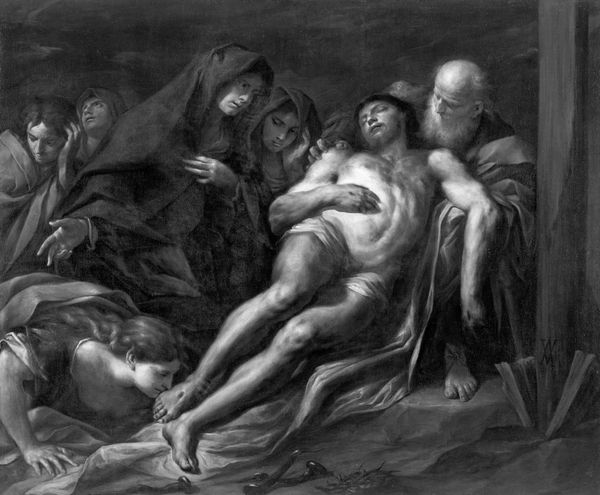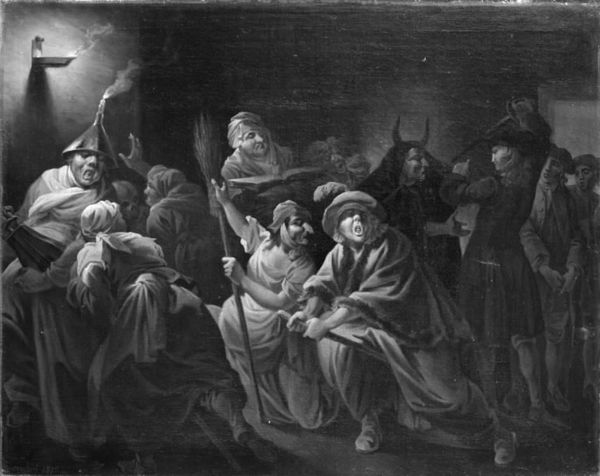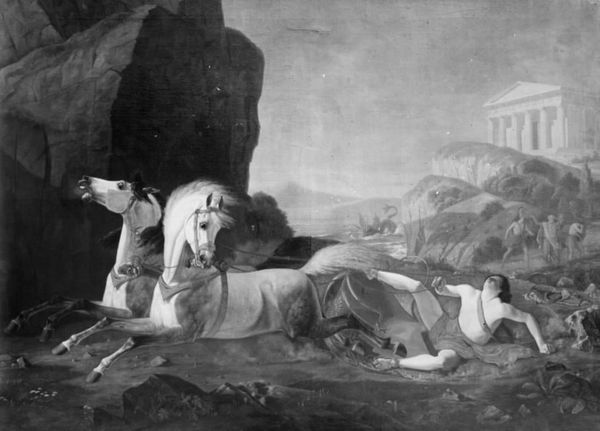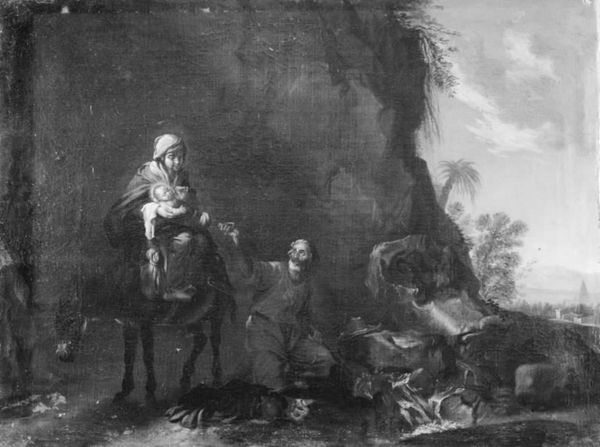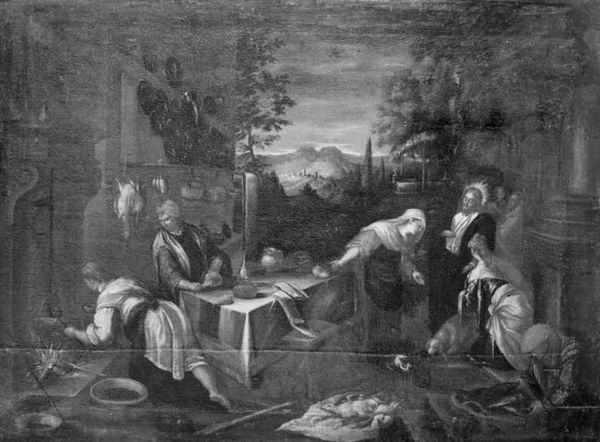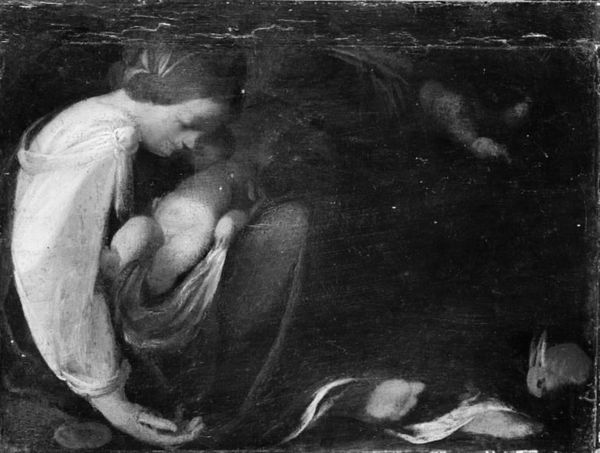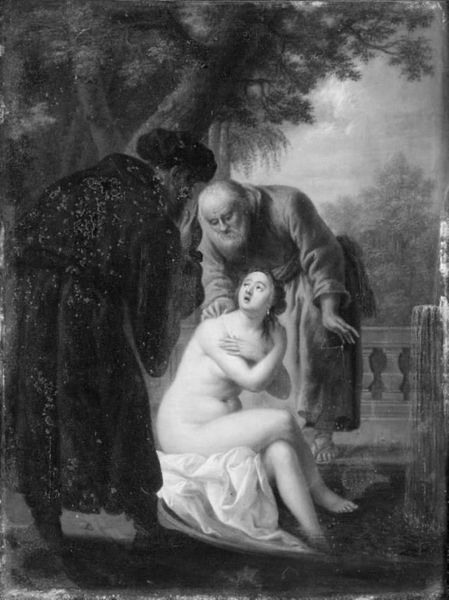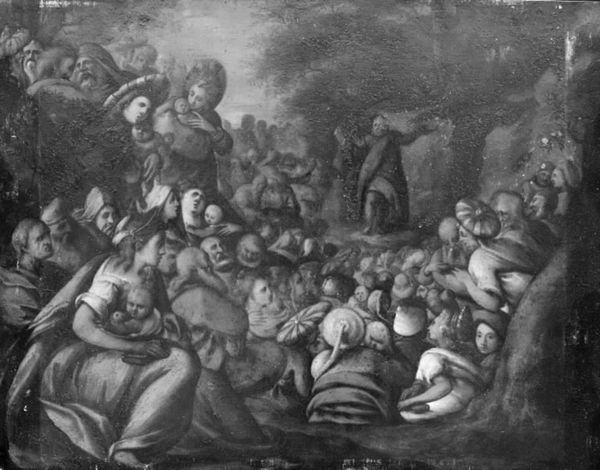
painting
#
baroque
#
painting
#
figuration
#
black and white
#
surrealism
#
haunting
#
history-painting
#
monochrome
#
monochrome
Dimensions: 18 1/2 × 58 in. (47 × 147.3 cm)
Copyright: Public Domain
Curator: Here we have "The Adoration of the Magi," painted around 1650 by Pietro della Vecchia. It’s currently held at the Art Institute of Chicago. Editor: It's strikingly stark, isn't it? The limited palette creates a really haunting, almost dreamlike quality. The light and shadow feel very theatrical. Curator: Indeed. This monochrome approach, nearly devoid of color, focuses our attention on the materiality of the paint itself and how that choice might reflect specific limitations of pigment accessibility at that time. Editor: I see it reflecting a certain humility, in line with the scene's solemnity. The Adoration is such a standard theme in art history; I wonder how Della Vecchia wanted this one to be understood politically, by the Venetian audience of its time. Curator: It’s interesting to consider the artistic lineage too. Della Vecchia’s work often consciously echoed earlier masters. Could this monochrome palette also point towards his awareness of the cost, and perceived value of colour and other expensive materials in paintings that were considered to be luxury goods? Editor: A deliberate artistic choice in response to socio-economic conditions of Venice perhaps. You know, looking at the composition, I can't help but think of how these religious paintings were often used as instruments for maintaining power and legitimizing authority. The magi offering tribute reinforces established social hierarchies. Curator: Absolutely. It raises questions about how artists of the Baroque period engaged with tradition, reinterpreting religious narratives for new contexts. In essence it brings us back to process again - his individual way of handling the very oil based paint gives it that particular flavour that could be endlessly replicated now, yet would require real specialist experience. Editor: Exactly, and considering this work’s place within a lineage of 'Adoration' scenes allows us to really consider the public role of images during that time and also for us, in museums today. Thank you for unpacking it with me! Curator: A pleasure. I appreciate you tracing its meaning to broader social narratives while acknowledging its particular form. It shows how vital those connections can be for interpretation.
Comments
No comments
Be the first to comment and join the conversation on the ultimate creative platform.
